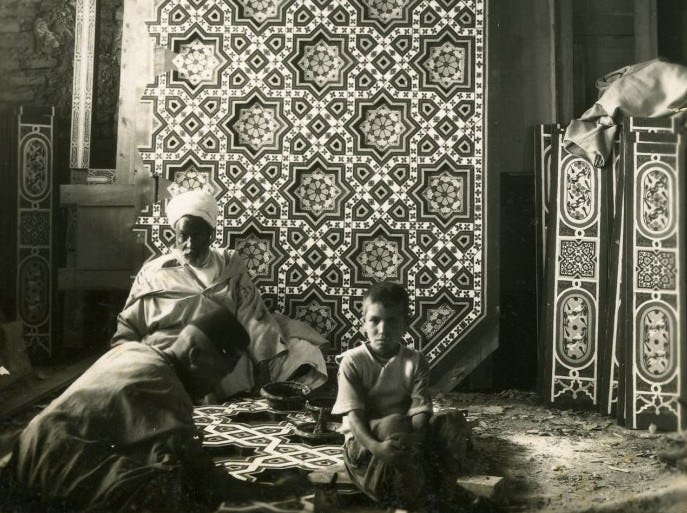Lusterware Dish with Rampant Lion and Thistle-Leaf Motifs
Date1450-1500 CE
PeriodHispano-Moresque
MediumEarthenware, tin glazed, luster and luster painted
DimensionsDiameter: 18 in. (45.7 cm)
ClassificationsCeramics
Credit LineCourtesy of the Doris Duke Foundation for Islamic Art
Object number48.189
DescriptionThe production of luster ceramics originated in Iraq in the ninth century. The complex and costly technique required two firings; during the first, the brownish-red coloration of earthenware was transformed into opaque white through the application of a tin glaze; during the second, metallic oxides of silver and copper were fixed to the white surface. The end result was a luminous surface that imitated metals like gold, largely explaining luster’s widespread popularity throughout the Islamic world. In the eleventh century, the luster technique moved westward to Fatimid Egypt (909–1171), where an artificial white ceramic body (stonepaste or fritware) was invented, thereby precluding the need for tin-glazing. In the thirteenth century, the luster technique reached the Iberian peninsula and was produced in the Mediterranean city of Málaga, often under direct royal patronage. As in Iraq, Spanish potters used tin-glazed earthenware, rather than stonepaste. During the fifteenth century, Manises, a suburb of Valencia on the eastern coast of Spain, emerged as a main center of luster production. Manises wares were especially prized by Italian and French patrons, among others, and therefore commonly featured Christian iconography and European blazons. Like other examples of Spanish art combining Christian and Islamic aesthetics, Manises wares are generally classified as “Mudéjar” (from the Arabic, “tamed” or “submissive”). This term was used to refer to Muslims who submitted to non-Islamic law prior to Ferdinand and Isabella’s conquest of Spain from the Islamic Nasrid dynasty (1232-1492) in 1492. After the fall of Islamic Granada, all Muslims in the Iberian Peninsula were known as Mudéjars. Before 1492, Muslims and Christians had coexisted in Spain for 800 years, and their visual cultures were closely intertwined from the thirteenth century onwards.
This dish has sloping walls double banded walls with a lion motif at center. The lion has a spiked tail and stands on four out strecteched legs with long claws on its paws. The lion's tongue sticks out. Surrounding the lion along the walls are two rows of large, repeated feather leaves. The exterior is decorated with concentric copper circles.
Doris Duke (1912–93) acquired approximately a dozen examples of Spanish luster in 1941 at the sale of the William Randolph Hearst collection. She displayed the majority of her Spanish ceramics in the living room, alongside a collection of over 200 Spanish luster wall tiles (48.168), which once adorned a ceiling of a church near Seville.
On View
On view19th century
19th - 20th century
18th - 19th century
19th - 20th century
17th century
17th century
12th - 13th century
12th - 13th century














